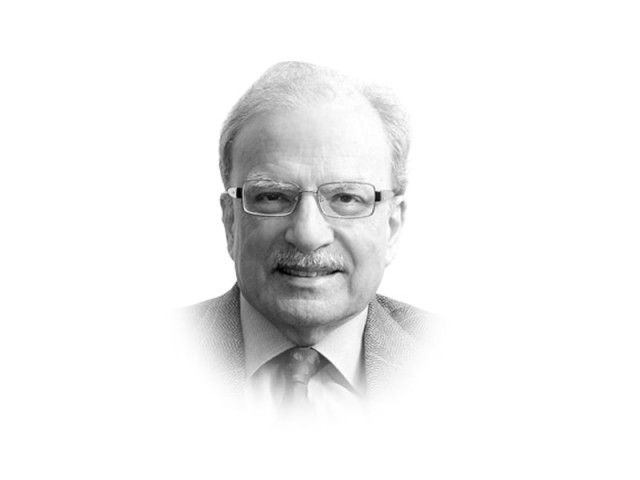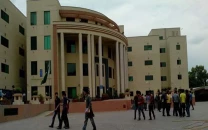Regional focus for developing international trade
In 1947, India was by far Pakistan’s largest trading partner

The writer is a former caretaker finance minister and served as vice-president at the World Bank
Institutions such as the International Monetary Fund, the World Bank Group and the World Trade Organisation have, over the years, done an impressive amount of empirical research to establish strong links between trade on one hand and the rates of economic growth and social development on the other. The World Bank’s well-regarded report entitled, “The East Asian miracle: economic growth and public policy” identified international trade as by far the most important determinant of that area’s extraordinary economic performance in the period starting in the mid-1970s.
The export-led economic growth strategy followed by these countries not only quickened their pace of development. It also changed the structure of the global economy as well as the pattern of international production. As the share of developing countries in world trade increased from 10 per cent in the mid-1990s to more than 30 per cent before the Great Recession of 2008-2009, so did their share in world product. The latter increased from 38 per cent in 1950 to 52 per cent by 2008. Now, the most rapidly growing part of international trade is of parts and components rather than commerce involving finished products.
What was achieved by East Asia could also be attained by other parts of the developing world. However, the strategy for increasing the trade to GDP ratio followed by the East Asian miracle economies cannot be repeated in other developing regions in today’s world. The East Asians used their disciplined, reasonably well-educated but relatively low wage workforce to produce cheap manufactures for the markets in the United States and Western Europe. These markets became more accessible because of the several successful rounds of trade negotiations conducted under the auspices of the General Agreement on Tariffs and Trade. These negotiations lowered the walls of tariffs particularly between the developed and developing parts of the global economy. Of special significance for textile producers such as Pakistan was the removal of the Multilateral Fibre Agreement, which had restricted the volume of textile exports to the United States, Europe and Japan.
But the world has changed since the East Asian miracle took place. Demographic developments in rich countries increased the age of their populations. This, in turn, has changed the structure of their demand. Those nations who want to rely on trade for growth have to look for new ways of doing it. This means searching for new markets, particularly in their neighbourhoods. The well-known gravity model of trade suggests that countries should build strong trading relations with large countries that are not too far. For the countries of South Asia, this means much greater intra-regional trade.
On March 22, 2016 Commerce Minister Khurram Dastigir presented the Medium-term Strategic Trade Policy Framework. This will be followed during the three-year period, 2015-2018. By the end of the period, Pakistan hopes to reach the target of $35 billion. This will be done by following four approaches: launching efforts to boost exports, improving competitiveness, transiting from a factor-driven economy to one that is driven by efficiency, and giving more attention to increasing regional trade. A number of specific measures were announced by the minister aimed at achieving these four objectives. However, judging by the press coverage of the minister’s press conference, not much was said about reorienting the country’s trade from its current destinations to those that are nearer home. Greater trade with Afghanistan, China, India and Iran should be the focus of government’s attention.
It is helpful to recall that at the time of Pakistan’s birth in 1947, India was by far its largest trading partner. About three-fourths of the country’s exports went to India and about the same proportion of its imports came from the neighbouring country. This was to be expected since for centuries what became separate states of India and Pakistan were part of the same economic system. Not only that the Subcontinent’s British rulers turned what are now the Pakistani provinces of Punjab and Sindh into the food granaries of the perennially food-short eastern provinces, this pattern of trade would have persisted for a long time had the New Delhi government not launched a trade war against its neighbour in 1949.
This pattern needs to change since regional trade has greater potential to bring about a significant increase in Pakistan’s trade to GDP ratio. This, however, deserved a much greater attention than the indication that four products – basmati rice, horticulture, meat and meat products, jewellery – would receive the attention of the authorities in increasing trade with Iran, China and Afghanistan. Trade with India was left out of the policy statement. Much more will need to be done if regional trade is to become an area of growth. Islamabad will need to pay attention to defining a policy framework supported by the needed institutional infrastructure to develop regional trade with special focus on Afghanistan, China and Central Asia.
Published in The Express Tribune, March 28th, 2016.
Like Opinion & Editorial on Facebook, follow @ETOpEd on Twitter to receive all updates on all our daily pieces.















COMMENTS
Comments are moderated and generally will be posted if they are on-topic and not abusive.
For more information, please see our Comments FAQ